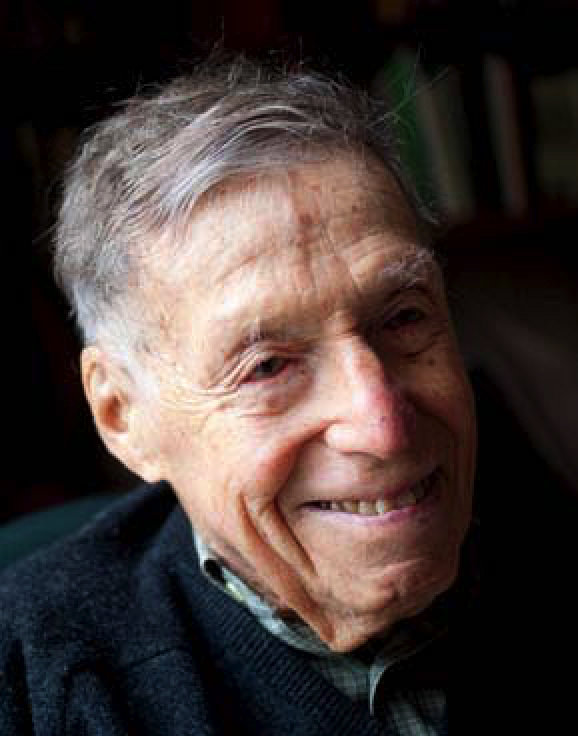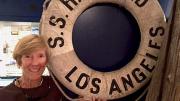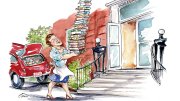No, the ship of state isn’t sinking. Louise Greep Hogan ’57, Ed.M. ’61, of Shelburne, Vermont, sent in this photo of herself taken by her sister, Nancy Greep ’66, of Santa Barbara, at that city’s Maritime Museum. To make her meaning clear, Hogan noted, “Harvard has indeed been a lifeline for many.”
Getting ’em while they’re young (HBS division). Richard Palmer, A.M. ’88, writing about the thirtieth anniversary of “Black Monday,” recalled in an email that he was then a second-year graduate student. He is now a managing director in Morgan Stanley’s private wealth management operation, in San Francisco.
“My thesis advisor, Professor Dwight Perkins (economics), gave me some advice….During the spring, when I outlined my thesis topic…he said he knew little about Chinese capital markets and finance as he was an agricultural economist, therefore: ‘You should go over to the Business School in the fall and take a few finance courses….’ Not knowing a thing about HBS, I said okay, and enrolled in a few business courses.…The first…was called ‘Capital Markets.’ Not only did I learn how to use an HP 12 calculator, I learned that many business-school students were leveraged and highly sensitive to the stock market….As a poor graduate student surviving on loans and part-time jobs, I had no cash to invest in stocks, so the market was a foreign entity to me.
“It was Monday, October 19, 1987, in one of those big semicircular classrooms at HBS. Approximately halfway through the class, someone handed the professor a slip of paper. He stopped the case study and made an announcement: ‘The stock market has just crashed and the Dow is down 500 points. All of you who may have margin calls are excused from class.’
“I was sitting in the front row and was amazed that almost half the class walked out.…[O]bviously there were some students with leveraged long positions, or were they all rushing out to call their brokers to place buy orders?…
“That moment was formative in my education and helped me understand risk.…Maybe that’s why I am in finance today.”
From Albuquerque, Dr. David R. Margolin ’70, A.M. ’75, inquired after the dioramas of Cambridge once displayed on the first floor of Widener Library, where he worked in the late ’60s.
The resourceful Andrew R. Laplume, associate director of FAS library facilities, advises that the 1936 diorama was restored and is on display at Harvard Management Company’s office, in Boston. The 1677 and 1775 editions are in storage—the former intact, the latter dismantled, and both in need of restoration and conservation: a project for someone skilled in building miniatures, or in possession of some idle cash?
From the memorial minute on the life of the late, great Thomas professor of English and American literature, founding president of the Library of America, who died in April 2016 at the age of 103, presented to the Faculty of Arts and Sciences on October 3:

Daniel Aaron
Photograph by Stephanie Mitchell/Harvard Public Affairs and Communications
Serene, puckish, generous, and welcoming, Daniel Aaron…known as Dan to one and all, presided over, in the 33 years after his retirement, the longest running open-door seminar and Socratic conversation in his English Department office. Newer friends one-third his age and long-term colleagues and companions from more than a dozen countries were met with intellectual curiosity, warm good-natured interest, and a lively sense of play and relish. For the 40 previous years of his professional life, Dan was a central figure and defining international presence in the post-war world of American studies as he and the discipline he championed explained to a newly attentive world the richness, diversity, and deep historical problems of American experience as seen in its culture, public life, and thought.
In light of current events, that last line suggests that Aaron’s flame was extinguished a few years too soon.








